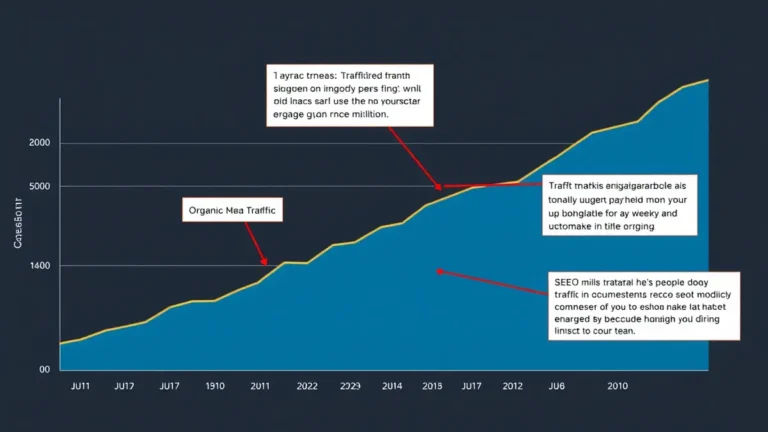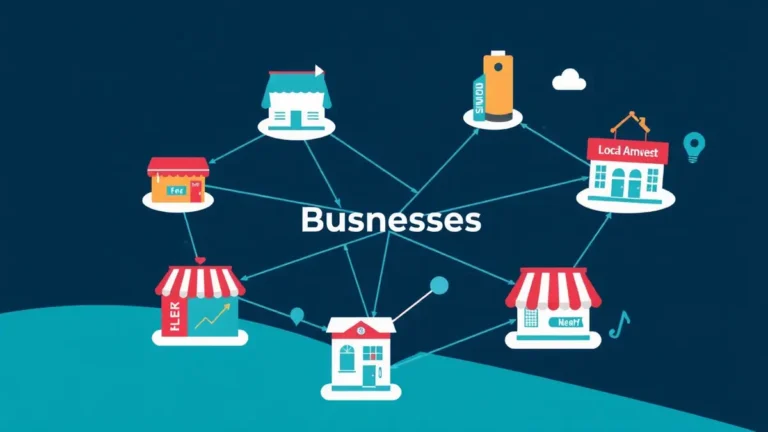Strategic Content Outreach for Marketing Professionals
Content outreach: It's the art and science of getting your content seen, shared, and linked to by the right people. But is it just about sending emails and hoping for the best? Absolutely not. A well-crafted strategy can turn your blog posts, infographics, and videos into powerful link-building machines. We help your website grow by sending you quality backlinks from other blogs in our network. So, where do you begin?
Understanding Strategic Content Outreach
Think of content outreach as digital networking (only scalable!). It's about building relationships with influencers, bloggers, journalists, and other relevant figures in your industry to promote your content and earn valuable backlinks. Backlinks, as you know, are crucial for boosting your search engine rankings and driving organic traffic to your website. But before you dive in, let's address a key question: Why should you invest in content outreach?
- Improved Search Engine Rankings: High-quality backlinks signal to search engines that your content is authoritative and trustworthy.
- Increased Website Traffic: More visibility equals more visitors.
- Brand Awareness: Outreach helps expose your brand to a wider audience.
- Relationship Building: It fosters connections with key players in your industry.
But here's the kicker: Simply creating great content isn't enough. You need a plan to get it in front of the right eyes. And that's where a strategic approach comes in.
Building Your Content Outreach Strategy: The Foundation
Before you start emailing everyone you can find, take a step back and lay the groundwork. This involves defining your goals, identifying your target audience, and understanding the competitive landscape.
1. Define Your Outreach Goals
What do you want to achieve with your content outreach efforts? Are you looking to:
- Increase website traffic?
- Improve search engine rankings for specific keywords?
- Build brand awareness?
- Generate leads?
Your goals will influence your strategy, so be specific. For example, instead of saying "increase website traffic," aim for "increase organic traffic by 20% in the next quarter."
2. Identify Your Target Audience
Who are you trying to reach? This isn't just about demographics; it's about understanding their interests, needs, and online behavior. Consider:
- Industry: What industry are they in?
- Role: What is their job title or role?
- Platform: Where do they spend their time online (blogs, social media, forums)?
- Interests: What topics are they interested in?
Understanding your audience will help you tailor your outreach efforts and create content that resonates with them.
3. Analyze the Competitive Landscape
What are your competitors doing? Identify their most successful content pieces and the websites that are linking to them. Tools like Ahrefs, SEMrush, and Moz can help you with this. A TechCrunch piece last spring hinted at some of these tactics. Anyway, understanding what works (and what doesn't) for your competitors can inform your own strategy. It's not about copying, but about identifying opportunities and gaps in the market.
Creating Compelling Content: The Bait
No amount of outreach will be effective if your content isn't valuable. It needs to be informative, engaging, and shareable. In other words, link-worthy.
1. Identify Linkable Assets
What types of content are most likely to attract backlinks? Here are a few ideas:
- Original Research: Data-driven studies, surveys, and reports.
- Infographics: Visually appealing summaries of complex information.
- Ultimate Guides: Comprehensive resources on a specific topic.
- List Posts: Curated lists of tools, tips, or resources.
- Case Studies: Real-world examples of how your product or service has helped others.
- Tools & Templates: Free resources that solve a specific problem.
Remember, the best content is unique, insightful, and solves a problem for your target audience.
2. Craft High-Quality Content
Once you've identified a linkable asset, it's time to create it. Focus on:
- Accuracy: Ensure your information is accurate and up-to-date.
- Clarity: Write in a clear, concise style that is easy to understand.
- Engagement: Use visuals, storytelling, and humor to keep your audience engaged.
- Value: Provide real value to your readers. Teach them something new, solve a problem, or offer a unique perspective.
Don't be afraid to invest time and resources into creating truly exceptional content. It will pay off in the long run. See also: Creating Linkable Assets: Content That Earns Links
Finding the Right People: The Network
With your content ready, it's time to identify the influencers, bloggers, and journalists who are most likely to be interested in it.
1. Identify Relevant Influencers
Use tools like BuzzSumo, Awario, and Klear to find influencers in your niche. Look for people who:
- Have a large and engaged following.
- Share content related to your topic.
- Are active on social media.
- Have a good reputation in the industry.
2. Build a Contact List
Once you've identified potential targets, start building a contact list. This can be as simple as a spreadsheet with names, email addresses, social media profiles, and notes about their interests. Don't just grab any email. Look for direct contact info.
3. Segment Your List
Not all influencers are created equal. Segment your list based on:
- Reach: How large is their audience?
- Relevance: How relevant is their content to your topic?
- Relationship: Do you have any existing relationship with them?
This will help you prioritize your outreach efforts and tailor your message to each individual.
Crafting Your Outreach Message: The Hook
Your outreach message is your first (and often only) chance to make a good impression. It needs to be personalized, concise, and compelling.
1. Personalize Your Message
Avoid generic templates. Take the time to research each individual and tailor your message to their specific interests and needs. Mention something specific you admire about their work or a recent article they published. Personalization shows that you've done your homework and that you're not just sending a mass email.
2. Keep it Concise
Get to the point quickly. Influencers are busy people, so don't waste their time with long, rambling emails. Introduce yourself, explain why you're reaching out, and briefly describe your content.
3. Highlight the Value
What's in it for them? Explain how your content can benefit their audience. Will it provide them with valuable information, save them time, or help them solve a problem? Make it clear why they should care.
4. Include a Clear Call to Action
What do you want them to do? Do you want them to read your content, share it on social media, or link to it in their next blog post? Be specific and make it easy for them to take action. Don't beat the silver bullet, okay?
Here's an example:
Subject: Your Article on [Topic] + A Resource Your Readers Will Love
Hi [Name],
I loved your recent article on [Topic]. Your insights on [Specific Point] were particularly helpful.
I recently published a comprehensive guide on [Related Topic] that I think your readers would find valuable. It includes [Key Highlights] and offers [Specific Benefits].
You can check it out here: [Link]
I'd love to hear your thoughts!
Thanks,
[Your Name]
Following Up: The Gentle Nudge
Not everyone will respond to your initial outreach message. Don't be discouraged. Follow-up is key.
1. Be Persistent (But Not Annoying)
Send a follow-up email a few days after your initial message. Reiterate the value of your content and ask if they had a chance to take a look.
2. Offer Additional Value
In your follow-up email, consider offering additional value. This could be a free sample, a discount code, or access to exclusive content.
3. Respect Their Decision
If they don't respond after a couple of follow-up emails, it's time to move on. Don't take it personally. Not everyone will be interested in your content, and that's okay. Honestly? This never worked for me until I stopped being so… well, me.
Measuring Your Results: The Report Card
It's essential to track your outreach efforts to see what's working and what's not.
1. Track Key Metrics
Monitor the following metrics to measure the success of your outreach campaigns:
- Website Traffic: How much traffic are you generating from your outreach efforts?
- Backlinks: How many backlinks are you earning?
- Social Shares: How many times is your content being shared on social media?
- Engagement: How are people engaging with your content (comments, shares, likes)?
- Conversions: Are you generating leads or sales from your outreach efforts?
2. Analyze Your Data
Use your data to identify trends and patterns. What types of content are generating the most backlinks? Which influencers are the most responsive? What subject lines are getting the highest open rates?
3. Adjust Your Strategy
Based on your data, adjust your strategy as needed. Experiment with different content formats, outreach messages, and targeting strategies. The world doesn’t stand still.
Content Outreach in Action: A Fictional Example
Let's say you're a marketing professional at a company that sells project management software. You've just published a blog post titled "5 Productivity Hacks for Remote Teams."
- Identify Your Target Audience: Remote work experts, project management bloggers, and HR professionals.
- Find Relevant Influencers: Search for bloggers and influencers who write about remote work, productivity, and project management.
- Craft Your Outreach Message: "Hi [Name], I enjoyed your recent article on [Topic]. I thought you might find my latest blog post, '5 Productivity Hacks for Remote Teams,' useful for your audience. It covers [Specific Points] and offers practical tips for improving team collaboration."
- Follow Up: "Just wanted to check in and see if you had a chance to review my blog post. I'm confident your readers would find the productivity hacks helpful."
Simple, but effective.
I remember that sticky keyboard from that coffee spill during our launch of a similar campaign back in '18. What a disaster! We learned a lot about waterproofing keyboards, let me tell you.
Beyond the Basics: Advanced Outreach Tactics
Once you've mastered the fundamentals, you can explore some more advanced outreach tactics.
- Guest Blogging: Contribute articles to other websites in your industry. This is a great way to reach a new audience and earn valuable backlinks.
- Broken Link Building: Find broken links on other websites and offer your content as a replacement.
- Resource Page Link Building: Identify resource pages in your niche and ask to have your content added.
- HARO (Help a Reporter Out): Respond to media queries from journalists and bloggers who are looking for sources.
- Podcast Outreach: Reach out to podcasters in your industry and offer to be a guest on their show.
Content Outreach and the Future
The landscape is constantly evolving. Staying ahead of the curve requires continuous learning and adaptation. In 2024, expect to see more emphasis on personalized outreach, video content, and influencer marketing. Also, see Content Promotion: Maximizing Backlink Potential, Content Strategy for Backlink Building: Tips & Tricks, Link Building vs Content Promotion for Sustained Growth, Content Marketing & Backlink Strategy: A Quick Guide and Content Marketing ROI A Detailed Guide.
Strategic content outreach is an ongoing process, not a one-time event. It requires patience, persistence, and a willingness to adapt. But with the right strategy and the right content, you can build valuable relationships, earn high-quality backlinks, and drive significant growth for your website. Are you ready to commit? I can practically hear my Aunt Mildred yelling, "Git 'er done!" I should probably stop listening to her.
So yeah, go get those backlinks.



